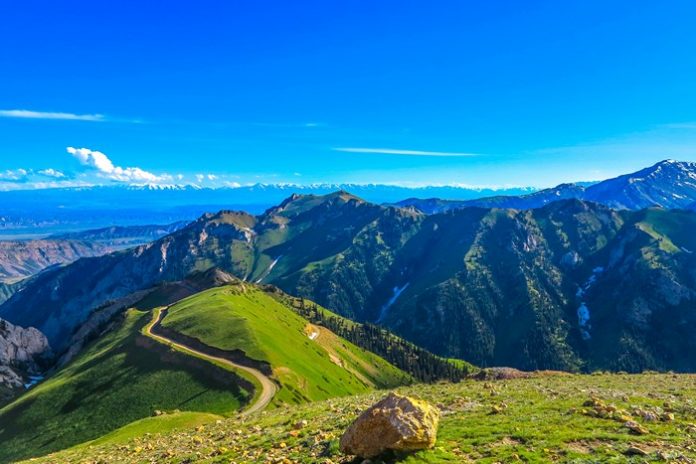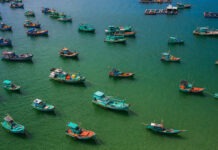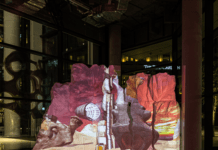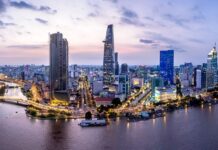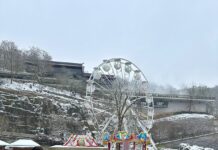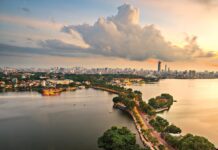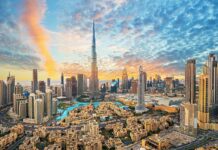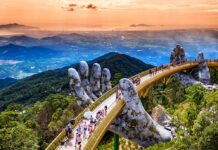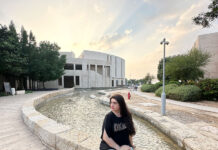Kyrgyzstan is a land replete with ancient history, modern cities, vast open spaces, and a natural landscape that is beyond splendor. It is outdoors, beyond the bustling cities with their high-rise building, ornate mosques and impressive museums that one comes across what makes Kyrgyzstan so delightful to visitors.
While a rugged landscape dotted with turquoise alpine lakes, towering snow-capped peaks and sweeping walnut forests, are hallmarks of some regions, others abound in historical artifacts that highlight the country’s unique nomadic heritage and its storied links to the ancient Silk Road. Here is a quick tour through the various spectacular regions of Kyrgyzstan.

Batken region: Batken is a province situated in the far southwest of Kyrgyzstan, and contains four mountainous areas, with altitudes ranging from 400 to 5621 meters above sea level. The province includes a number of enclaves belonging to Tajikistan and Uzbekistan, created when the borders of the Central Asian republics were outlined by a commission of the Soviet Union under Joseph Stalin. There are seven enclaves altogether — some are very small, not much more than the size of a farm. The largest is the Sokh District, which belongs to Uzbekistan, and has a population of 52,000.
There are a number of tour bases around the province, including Pyramida-Dolina in the Batken Region, Ak-Suu and Ozgorush in the Laylak Region, and Dugaba in the Kadamjaiski Region. These bases have hosted a number of international mountaineering expeditions.
There are also a number of ancient sites scattered throughout Batken Province.

Jalalabad Region: Jalal-Abad originally developed as a market town, and as a stop on the Silk Road. Jalal-Abad is supposedly named after Jalal-ad-Din, who founded caravanserais to host merchants and pilgrims traveling through the village. Among the most beautiful tourist sites is the Shakh-Fazil Archaeological Complex dedicated to Shakh Fazil, who ruled the Fergana Valley in the 11th-12th centuries.
The mausoleum itself is an excellent architectural monument, with ornamental script and traditional Islamic artistic designs that have placed the mausoleum on the waitlist for the UNESCO World Heritage Sites registry. Near Jalal-Abad is a health resort, famous for its healing waters. The nearby Azreti-Ayup-Paygambar spring (named after the prophet Job) is famous for its healing powers. The resort was originally founded in 1886, though the buildings that are there today are from the Soviet period.

Naryn Region: Though certainly not a large city, Naryn hosts several government offices, museums, and a campus of the University of Central Asia. Just outside of Naryn is Koshoy Korgon, the remains of a mud fortress. There is a small museum near the fortress, with exhibits about archaeology and culture in Kyrgyzstan. For those more interested in the arts and traditions of Kyrgyzstan, At-Bashi is a small village not too far from Naryn, complete with local artisans, cuisine, and a storied past. At-Bashi also makes a great starting place for exploring the jailoo (summer pasture) and forests deeper into the mountains in Naryn.

Talas Region: Located in the western corner of Kyrgyzstan, Talas is separated from the country by a chain of mountains, but can be reached by crossing the Teo-Ashuu Pass. Talas Province is famous as the probable birthplace of the legendary hero Manas and of Kyrgyzstan’s most famous writer, Chingiz Aitmatov. One of the most important sites in the Talas Valley is Manas Ordo, the supposed burial site of the legendary Manas. As the main hero of the Epic of Manas, Manas unites the warring Kyrgyz tribes and brings peace to the region. As Manas was supposedly also born in Talas, the valley has become a center for all things related to Kyrgyzstan’s national hero.
About 20km northeast of Talas are three ancient camps: Kulan Sai, Terek Sai, and Tash Kurgan. Near these camps are cave paintings and petroglyphs. To the south of the city is Besh Tash (‘five stones’) a stunning valley. The Kirov Reservoir is the second largest reservoir in Kyrgyzstan, creating a large lake on the Talas River that is well worth visiting. Besh-Tash National Park has been a protected zone since 1996, and boasts some of the most unique and gorgeous juniper forests in the whole country. For those looking for a little more adventure, Manas Peak, the highest peak in the Talas Range at 4,482 m (14,705 feet), is a great place to visit.

Issyk-Kul region: Issyk-Kul is the world’s second largest alpine lake, lying at 1609 meters above sea level. Even though it is surrounded by mountains, Issyk-Kul never freezes, thus its name means ‘hot lake’ in Kyrgyz. The lake itself is surrounded by protected marshlands, two mountain ranges, and many popular resorts and destinations, including Karakol and Cholpon-Ata.
There are many archaeological remains around Issyk-Kul, from the petroglyphs in Cholpon-Ata to remains of buildings and cities that lie under the waters (the depth and shape of the lake has changed over history because of earthquakes). The shores of Issyk-Kul were well populated, and were famous among travelers and merchants. The area is well known for its many resorts, spas, and sights, all of which combine to make the region one of the most popular in Kyrgyzstan.
To the north of the lake are the Kungey (sunny) Ala-Too Mountains, and to the south are the Terskey (shady) Ala-Too Mountains. There are several famous gorges around the lake, including Boom Gorge, which the highway from Bishkek winds through. To the north of the lake are Grigorevka Gorge and Kyrchyn Gorge, and to the south are Barskoon and Fairytale (Skazka) Canyon. Near Karakol, at the eastern end of the lake, is Jeti Oguz, a famous red sandstone formation. Altyn Arashan is a perfect combination of trek plus a visit to hot springs to relax your tired muscles. Many treks leave out of Karakol into the surrounding mountains, some reaching as far as Khan Tengri and Pobeda Peak, the two highest mountains in Kyrgyzstan.
Many parts of the shoreline are sandy beaches, which is why many people flock to Lake Issyk-Kul in the summer. Some parts are also marshland, which is why Lake Issyk-Kul is a protected marshland and a UNESCO Biosphere Reserve. There are also hot springs and a saline lake near the shores, which are popular among those who seek health and spa treatments. Salty Lake, on the south shore, is well-known for its very salty waters (like the Dead Sea), and people come to float and to use the water for medicinal purposes.

